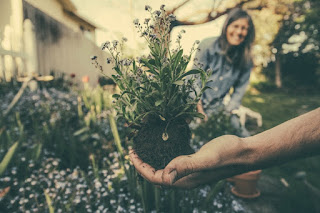Going Natural: The Importance of Home Composting for Native Plants
Going Natural: The Importance of Home Composting for Native Plants
By Jackie Edwards
Native plants aren’t by any means demanding...all they require in order to flourish is a natural environment. No need for chemical fertilizers, irrigation systems or complex programs of management. That’s great news if you’ve planted native species of Central Florida in your yard. The local climate will serve your plants well, and the soil will be matched to their requirements. However, to ensure you maintain optimum soil conditions, especially important with sandy soils typical of the Florida region, it’s a good idea to use home compost. This is the natural, environmentally-friendly way to replenish nutrients.
Making environmental sense
According to the EPA, 20 to 30 per cent of our waste is organic material that should be composted. This would keep these materials out of landfills where they release methane into the atmosphere, a potent greenhouse gas that contributes to global warming.
Boosting soil quality
Home composting is the natural way to enrich your soil, helping it retain moisture and suppress plant diseases and pests. By adding compost, you will promote the healthy growth of native species and reduce the need for chemical fertilizers that degrade soil quality over time and make it vulnerable to invasive non-native plants.
Money in your wallet
There are inevitable financial benefits to home composting: no need to invest in fertilizers, potting compost or mulch. The only cost involved is an initial investment in a compost bin; however, you may prefer to construct one yourself or, as Florida’s warm climate allows, you could use an open air compost pile.
Easy as mud pie!
The rules of good composting are very simple. Always ensure you use organic material, with a good mix of green materials, rich in nitrogen, and brown materials, rich in carbon. Green materials may include garden waste, such as plant trimmings, grass and leaves, and kitchen waste, such as fruit and vegetable scraps, and coffee grounds. And brown materials may include shredded newspaper, cardboard and paper towels. Avoid meat, dairy, dog and cat litter and invasive plant trimmings which can survive the composting process. Try to aim for a ratio of 1 to 3 of green to brown materials and rotate your compost every few days. Within a few months, you will have a dark, crumbly, humus-rich product.
Are YOU home composting?
As can be seen, there are numerous benefits to the simple art of home composting, and yet a survey sponsored by the National Waste & Recycling Association found that 67 per cent Americans currently don’t compost but would be willing to do so. So what can be done to encourage more take up?
In Hillsborough, the UF/IFAS Extension runs free ‘Compost Happens’ workshops with the aim of encouraging more people to get involved in home composting. They also host valuable teaching resources on their website. So, if you’re keen to grow native plants in your yard and give them the very best nourishment in an environmentally responsible way, then there’s really no excuse...get started on your home compost.




Comments